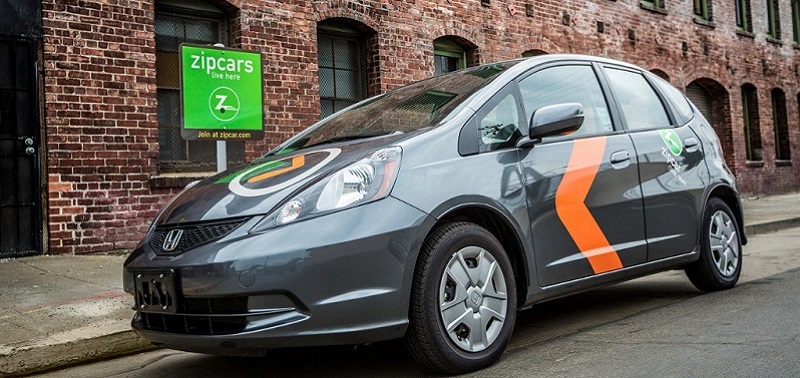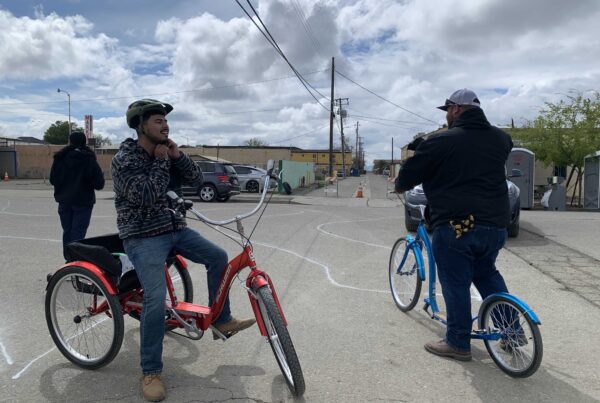Zipcar launched a point-to-point carsharing pilot program in Boston last May that departed significantly from its traditional business model, which has required cars to be picked up and dropped off at the same location. The pilot, ONE>WAY, represents a unique hybrid model that blends elements of traditional carsharing, such as guaranteed parking and advance reservations, with the spontaneity and freedom of the one-way model.
The ONE>WAY pilot was made available to all Boston residents in December 2014 and currently features 200 Honda Fit subcompact cars and more than 200 spaces or “pods” specifically built for the one-way service. In all, Zipcar has approximately 1,000 total parking spots located throughout the Greater Boston area.
Following is a snapshot of Zipcar’s pilot, including uses, implications, challenges and developments related to this new model of carsharing.
Uses: ONE>WAY users can only book cars 30 minutes before their trips – as opposed to days or weeks in advance as permitted with traditional carsharing. As a result, the pilot’s cars are often used in different ways than Zipcar’s traditional fleet. For instance, users are more likely to use the ONE>WAY cars for more spontaneous trips, such as driving to a bar or restaurant, or on other excursions without a planned return. ONE>WAY’s crowd-sourcing tool shows that one of the most popular trips is between Logan Airport and downtown Boston.
According to Zipcar, drivers also have the option of using unlimited renewals to extend their trip, since other members cannot book until the reservation is over and the car is in its final destination. Some are even using ONE>WAY for round-trips by selecting the same starting and ending point.
Implications: The nature of the trips taken through ONE>WAY means that the service more closely resembles – and competes with – modes of transportation that serve last-minute transportation needs such as traditional taxis, public transit and ridesourcing services like Uber and Lyft. In a way, the point-to-point service is much like an alternative cab service that allows users to drive themselves. ONE>WAY costs $6 per 30 minutes – much cheaper than many cab fares – on top of an annual membership fee of $60 if paid all at once.
New model: Unlike other point-to-point carsharing models, ONE>WAY features reserved parking on both ends of the trip. Members book their car and choose their pick-up and drop-off locations prior to the rental period. This model means that drivers don’t have to circle endlessly looking for parking and gives Zipcar greater control over the volume and flow of spaces. However, it also puts more constraints on drivers’ trips compared with other point-to-point carsharing services, which allow users to park in any legal public street space.
Challenges: In some ways, the ONE>WAY model is most similar to dock-based bikesharing, which requires users to begin and end their rides at specific locations. And, just like bikesharing, clustering of vehicles in popular destinations may present a challenge. While Zipcar can’t “re-balance” its vehicles like a bikesharing provider, the company says its booking process partly addresses the issue since users can only choose destinations that have open parking.
Developments: ONE>WAY may be further evolving in the coming year. Zipcar recently bid on free-floating parking spaces made available through the City of Boston’s new DriveBoston pilot program. The pilot offers 150 free-floating permits for $3,500 per car per year, as well as 80 municipal spots for $3,500 per year in downtown Boston and $2,700 per year in surrounding areas.
The spaces mean ONE>WAY users would be free to park in any street space, without having to pre-book or worry about permits or feeding the meter. However, Zipcar says it will also continue to give members the option of using reserved spaces.
Regardless of business model, it’s clear that demand for point-to-point carsharing is increasing. According to forecasts from automotive and transportation consultant Vishwas Shankar, nearly 3 million North American consumers are expected to be members of a car-sharing service by the end of 2015, with 8 percent having used a one-way service. By the end of 2020, Shankar predicts those numbers will increase to 8.4 million and 20 percent, respectively.
The carsharing industry as a whole has evolved a great deal since it first started in the U.S. in the late 1990s, and it has been very exciting to see so many experiments and efforts to broaden consumer choice. At SUMC, we believe that – when it comes to shared mobility – the more choices, the better! We applaud this type of innovation and look forward to tracking research on the impacts and implications of these new efforts for cities across the nation. You can keep up to date on our work by following us on Twitter and signing up for our newsletter.



